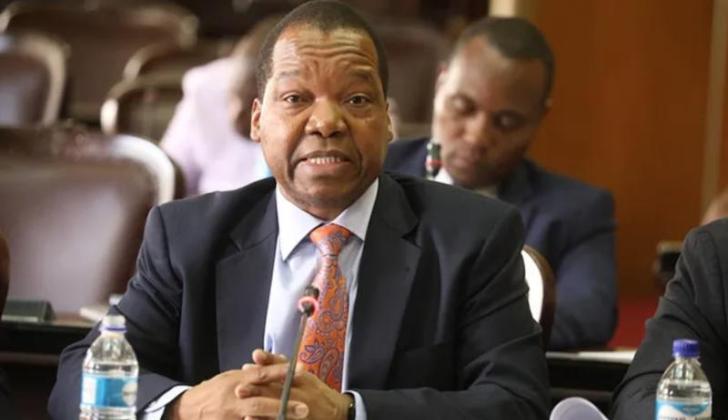News / Local
Demand for Zimdollar still high
17 Mar 2023 at 18:59hrs |
1 Views

ZIMBABWE'S central bank says demand for the local currency remains high despite increased use of foreign currency across economic sectors.
The country legalised the dual monetary system to tame runaway inflation which had rendered the Zimbabwe dollar almost worthless.
The use of hard currency in Zimbabwe is the second time in just over 10 years. In 2008, Zimbabweans ditched the local unit for a basket of multiple currency following an economic implosion which wiped out the value of the domestic currency.
Reserve Bank of Zimbabwe governor John Mangudya told delegates attending a currency and inflation symposium organised by the Zimbabwe Economic Society that although 70% of government expenditure is now in hard currency, appetite for the local unit remains high.
"The demand and use of ZW$ is still robust as depicted by continued strong demand for ZW$ loans despite the high interest rates and high levels of transactions on settlement of domestic transactions. Velocity of ZW$ has shown signs of stabilising in line with positive inflation developments Average monthly transaction in local currency is equivalent to more than US$5 billion," Mangudya said.
"The Bank is comfortable with the current dual currency system and will do whatever it takes to sustain it until durable stability necessary to support the significant use of the local currency in the economy. Annual inflation currently at 92% and expected to end the year around 15% and to be single digit from 2024. This should encourage continued use of the local currency."
Financial dollarisation is the degree of foreign currency in terms of the assets and liabilities of the balance sheet of the financial system.
The central bank chief said the ratio of foreign assets to broad money declined from about 100% in 2009 to around 4% by end of 2018, resulting in reduced financial dollarisation. He said this was reflective of money creation by banks and high fiscal deficits.
He said confidence in the fixed exchange rate/parity from 2009-2018 sustained the multicurrency system despite lower levels of forex compared to the current scenario.
"The significant mismatch culminated in the creation of blocked funds, a scenario that needs to be avoided going forward," he said.
The ratio of foreign currency deposits to M3 increased since 2019, signalling increasing financial dollarisation. The ratio, the central bank says, is currently around 65%.
The country legalised the dual monetary system to tame runaway inflation which had rendered the Zimbabwe dollar almost worthless.
The use of hard currency in Zimbabwe is the second time in just over 10 years. In 2008, Zimbabweans ditched the local unit for a basket of multiple currency following an economic implosion which wiped out the value of the domestic currency.
Reserve Bank of Zimbabwe governor John Mangudya told delegates attending a currency and inflation symposium organised by the Zimbabwe Economic Society that although 70% of government expenditure is now in hard currency, appetite for the local unit remains high.
"The demand and use of ZW$ is still robust as depicted by continued strong demand for ZW$ loans despite the high interest rates and high levels of transactions on settlement of domestic transactions. Velocity of ZW$ has shown signs of stabilising in line with positive inflation developments Average monthly transaction in local currency is equivalent to more than US$5 billion," Mangudya said.
Financial dollarisation is the degree of foreign currency in terms of the assets and liabilities of the balance sheet of the financial system.
The central bank chief said the ratio of foreign assets to broad money declined from about 100% in 2009 to around 4% by end of 2018, resulting in reduced financial dollarisation. He said this was reflective of money creation by banks and high fiscal deficits.
He said confidence in the fixed exchange rate/parity from 2009-2018 sustained the multicurrency system despite lower levels of forex compared to the current scenario.
"The significant mismatch culminated in the creation of blocked funds, a scenario that needs to be avoided going forward," he said.
The ratio of foreign currency deposits to M3 increased since 2019, signalling increasing financial dollarisation. The ratio, the central bank says, is currently around 65%.
Source - thenewshawks
Join the discussion
Loading comments…



























